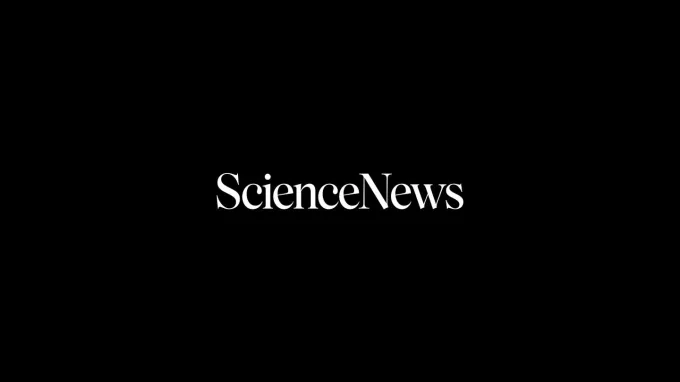Science News Magazine: Current Issue
Vol. 161 No. #9
Trustworthy journalism comes at a price.
Scientists and journalists share a core belief in questioning, observing and verifying to reach the truth. Science News reports on crucial research and discovery across science disciplines. We need your financial support to make it happen – every contribution makes a difference.
More Stories from the March 2, 2002 issue
-

Encouraging signs but no woodpecker
A birding team searching in Louisiana for the possibly extinct ivory-billed woodpecker heard a promising pattern of taps but did not see the bird or hear it calling.
By Susan Milius -
 Health & Medicine
Health & MedicineHigh homocysteine tied to Alzheimer’s
Research has linked the incidence of Alzheimer's disease and other forms of dementia to elevated blood concentrations of the amino acid homocysteine.
By Nathan Seppa -
 Tech
TechLittlest catalysts get a lot of support
Tiny metal clusters used as catalysts are getting so small that presumably inert carrier materials that host them are also getting involved in the reactions.
By Peter Weiss -
 Health & Medicine
Health & MedicineCoffee beans, cavity-causing germs
Compounds in coffee loosen the grip of bacteria that cause tooth decay.
By Ben Harder -
 Earth
EarthEl Niño’s coming! Is that so bad?
Although El Niño is often blamed for ill effects that total billions of dollars, a broader analysis suggests that the United States garners substantial benefits during this weather pattern.
By Sid Perkins -
 Chemistry
ChemistryWheat protein smooths ice cream
Proteins extracted from winter wheat keep ice cream smooth by preventing ice crystals from growing.
-
 Health & Medicine
Health & MedicineMore good news about chocolate
The Kuna people of Central America appear to keep their blood pressure down by drinking cocoa rich in chemicals called flavanols.
-
 Paleontology
PaleontologyNo Olympian: Analysis hints T. rex ran slowly, if at all
Tyrannosaurus rex, a bipedal meat eater considered by many to be the most fearsome dinosaur of its day, may not have been the swift Jeep-chaser portrayed by Hollywood.
By Sid Perkins -

Good Grief: Bereaved adjust well without airing emotion
Among bereaved spouses tracked for up to 2 years after their partners' death, those who often talked with others and briefly wrote in diaries about their emotions fared no better than their tight-lipped, unexpressive counterparts.
By Bruce Bower -
 Astronomy
AstronomyAmbitious Mission: Hubble slated to get one heckuva tune-up
If all goes according to plan, astronauts aboard the space shuttle Columbia will embark on the fourth and most technically challenging mission to replace damaged parts and install new detectors on the Hubble Space Telescope.
By Ron Cowen -
 Health & Medicine
Health & MedicineBroken Weapon: Mutation disarms HIV-fighting gene
A gene that once produced a small protein able to prevent HIV from infecting cells now lies unusable in the human genome.
By John Travis -
 Animals
AnimalsHoney-Scented Elephants: Young males’ faces drip sweet signals
An Asian bull elephant just reaching maturity secretes a liquid from glands on its face that smells like honey.
By Susan Milius -
 Materials Science
Materials ScienceThin Jet Flies Two for One: Double streams yield sheathed nanoballs, fibers
Researchers have used powerful electric fields to stretch liquids into ultrathin jets in which a stream of one liquid encloses the stream of another.
By Peter Weiss -

Copy Crab: DNA confirms that crab forms have several origins
New genetic evidence suggests that crabs aren't all close relatives and their characteristic shape evolved independently on numerous occasions.
-
 Health & Medicine
Health & MedicineProtein Repair: New compounds may help cells fight off cancer
Researchers have identified a compound that enables even defective p53 proteins to initiate anticancer chain reactions.
By Nathan Seppa -
 Paleontology
PaleontologyDuck-faced croc had a gap-toothed grin
Paleontologists have unearthed fossils of a tiny crocodile that boasted a smile like no other: The animal had no teeth across the entire front of its mouth.
By Sid Perkins -
 Health & Medicine
Health & MedicineTracking Tumors
Researchers are trying to visualize molecular and cellular changes as a cancer responds to therapy in order to predict whether treatments are effective sooner than it's currently possible to determine.
-
 Earth
EarthAvalanche!
Laboratory studies of how snow crystals change shape under fluctuating environmental conditions and computer analyses that match the patterns of past avalanches with detailed meteorological data are helping scientists uncover the secrets of avalanches.
By Sid Perkins
